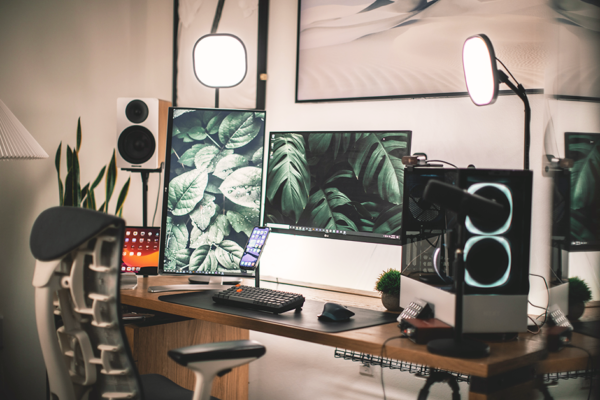Are you in pain with tech neck? Our top tips will help.

Our latest blog post explores how you can improve physical pain or discomfort caused by the overuse of screens.
Adults in the UK spend around 40% of their waking hours in front of a screen, as found in Ofcom’s latest annual study. This represents a one-third increase from 2019. Screen time is linked to being sedentary (not moving for long periods of time). The overuse of screens – especially when failing to invest in ergonomic chairs – can cause a plethora of health problems, including backache, neck, and hip pain.
The following tips can help you reduce symptoms of screen overuse…
1. Choose ergonomic furniture
Choose a standing desk that allows you to alternate between sitting and standing positions while working to avoid being sedentary. Whatever desk you have, get up frequently to stretch, exercise, or run/walk up and down a flight of steps.
2. Make adjustments
If you’re using a desk, the top of your screen should be at (or slightly below) eye level. You can achieve this by investing in a good, height adjustable ergonomic chair that supports your back and helps you keep your neck straight.
Your thighs should be parallel to the floor, with your feet resting flat on the floor or on a footrest.
The ASDF row on your keyboard should be at elbow height, and your forearms should be parallel to the floor, your wrists should be straight and flat, and your elbows should be close to your sides.
Your monitor should be at least 51cm away, but this distance can increase if you’re using a large monitor. You can use monitor stands and risers to achieve this.
3. Sit straight
TMJ (temporomandibular joint) disorders are linked to excessive screen time. When you slouch forward for extended periods of time these are exacerbated. Sit straight and in balance when you are sitting at a computer or looking at another screen-based device.
4. Align yourself
Keep your ears above your shoulders, not in front of them.
Sitting down for several hours straight can lead to tight hip flexors and hip flexor pain because it causes muscles to relax and become shorter and weaker. Once again, a good ergonomic setup can help quell the pain. Align your feet with your pelvis and keep your spine straight.
5. Complete stretching exercises
You should complete stretching exercises throughout the day – including hip flexor and hamstring stretches. One simple hip flexor stretch involves standing up with one leg in front and your hand resting on your hips. Keep your back straight, then slowly shift your weight forward while squeezing your buttock muscles, so that you feel a ‘burn’ in the front of your hip.
Written by Jennifer Kross, a former occupational health advisor for small to medium businesses.




Recent Comments